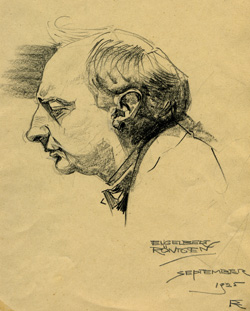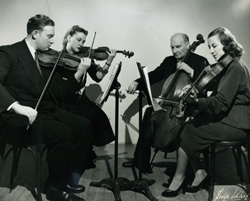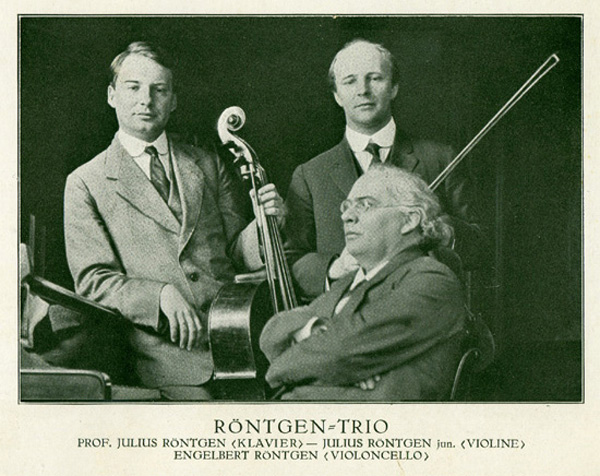Engelbert Röntgen
- Dutch cellist (Amsterdam, 12 August 1886 – 1958).
- Son of Julius Röntgen and Amanda Maier.
- Pupil of Julius Klengel and Pablo Casals.
- Solo cellist in various European and American orchestras, including the Metropolitan Opera in New York.
- 1921 marriage to the American Helena Helfrich Adamson.

Engelbert Röntgen,
drawing of Frants Röntgen
After the birth of her first son Julius jr. in 1881 Amanda suffered three miscarriages, but more than 5 years after his elder brother was born she gave birth to Engelbert, on 12 August 1886. After that, his mother’s health was never quite the same. Her health deteriorated and Amanda died on 15 June 1894 when Engelbert was 8 years old
Despite these difficult times the music never ceased to sound in the overly busy life of father Julius the composer, pianist, teacher and conductor; after his second marriage in 1897 to Abrahamine des Amorie van der Hoeven the Röntgen home, from 1900 onwards at Van Eeghenstraat 77, remained a meeting point for many national and international musicians. Engelbert too travelled to manor ‘Fuglsang’ on the island Lolland in Denmark from a very early age, where every summer Bodil de Neergaard – daughter of the Danish composer Hartmann – artists, friends and family assembled and played music together.
Engelbert and his brother and later on his half-brothers too, were all allowed to participate in chamber music concerts very early on; moreover they could enjoy the beautiful natural surroundings – bicycle rides and mountaineering were favourite pastimes. Engelbert travelled to Norway with his parents, where they visited Grieg.
In 1905 Engelbert went to Leipzig to take cello lessons with his great-uncle Julius Klengel, solo cellist with the Gewandhausorchester. In 1907 he studied with Pablo Casals (Julius Röntgen writes to Grieg that the time is right for his son to strike up a reputation in Paris and the genius of Casals who, with his lessons, develops technique from a musical point of view).

Woodstock String Quartet
In September 1907 Engelbert was appointed as solo cellist of the Tonhalleorchester in Zürich and teacher at the Conservatory there. From 1912 he fulfilled the same function at the Court Opera in Vienna. During a stay in Holland he was unable to go back to Vienna because a message had come from the German consulate that he, as the son of a German citizen, was to report for military duty in Germany. Since settling in Holland in 1878 his father had never worried about the fact whether he was a German or not. As soon as Julius Röntgen had himself naturalised, his sons became Dutchmen too, but as long as the war was on it was impossible for Engelbert to travel through Germany, meaning he was trapped in Holland and lost his position in Vienna. There was little to do for him in Holland, upon which he decided to leave for America in 1916, where he could get a job as solo cellist of the New York Symphony Orchestra conducted by Walter Damrosch. Later he got the same function in Minneapolis and in New York again, this time with the Metropolitan Opera Orchestra (from 1930 onward). He also achieved renown with his concerts in the Maverick Art Colony, Woodstock, founded by Hervey White. As founder and cellist of the famous Woodstock String Quartet he made many concert tours through America and as a soloist he performed, among other works, the Cello concerto no. 2 in G minor (1909) by Julius Röntgen, dedicated to Casals.
Whenever he could free himself from his busy concert activities in America he would regularly make tours though Europe with his father and brother, Julius; the ‘Röntgen Trio’ received a lot of attention and praise. After his retirement from the Metropolitan Opera Engelbert returned to Europe with his wife. At first he settled in Heidelberg and several years later in the climatically slightly more blessed Lugano. He died in hospital in 1958, where his nephew Frithjof in the meantime had become a doctor/managing director. He is buried in Bilthoven. In 1963 his wife finally returned to the United States, where she died in 1966.

